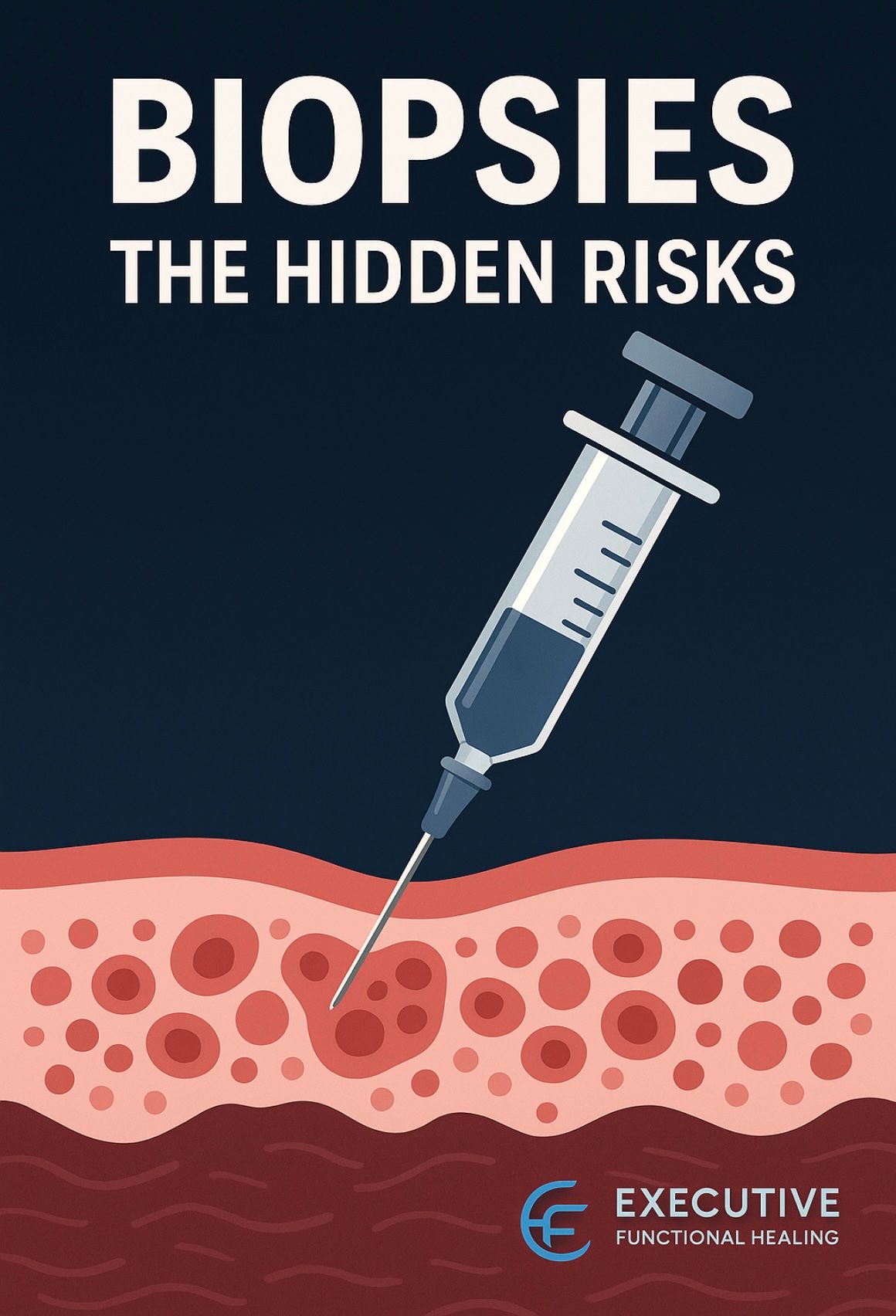The Hidden Risks of Biopsies: How They Can Accelerate Cancer Spread
Why Cutting Into Tumors Can Accelerate Cancer Growth and Metastasis
A Biopsy Is Almost a Guarantee of Cancer Metastasis and Acceleration
Why Cutting Into Tumors Can Accelerate Cancer Growth and Metastasis
For years, patients have been told that a biopsy is the only way to “know for sure” if a tumor is cancerous. But what you’re not told is that this invasive procedure can sometimes do more harm than good. Emerging evidence shows that biopsies can actually accelerate cancer spread, trigger metastasis, and compromise the very terrain your body needs to fight disease.
How Biopsies Disrupt the Body
1. Needle-Track Seeding
When a biopsy needle punctures a tumor, it can physically dislodge malignant cells and release them into the bloodstream or lymphatic system. These cells can then implant elsewhere, creating new growths. This phenomenon is well-documented in research and known as needle-track seeding.
2. Inflammation as Fertilizer for Cancer
Every cut or puncture creates inflammation. While inflammation is meant to heal, it also floods the area with growth factors and cytokines. Cancer cells feed on these signals, making an inflamed environment a perfect breeding ground for acceleration.
3. Angiogenesis and Blood Supply
Trauma from a biopsy can stimulate angiogenesis—the formation of new blood vessels. Unfortunately, this gives cancer cells increased access to oxygen and nutrients, helping them spread and thrive more aggressively.
4. Weakening the Body’s Natural Barrier
Your immune system often tries to wall off tumors to limit their spread. Biopsies break through these barriers, leaving the immune defenses temporarily weakened and allowing aggressive cells to escape.
Why You Rarely Hear About This Risk
Conventional medicine downplays biopsy risks because biopsies are considered the “gold standard” for diagnosis. They are also highly profitable. Yet multiple clinical studies confirm that biopsies can accelerate progression in certain cancers. Patients are often not fully informed that the very act of testing may worsen the condition.
Safer, Functional Alternatives
You have options beyond invasive procedures. Non-invasive testing methods are available and growing more advanced every year:
- Liquid biopsies & bloodwork: Detect circulating tumor cells and DNA fragments without cutting into tissue.
- Thermography and functional imaging: Identify abnormal metabolic activity without creating trauma.
- Functional medicine labs: Reveal the underlying terrain—immune function, toxic load, hormone imbalances—driving cancer growth.
The Root-Cause Perspective
Cancer doesn’t appear overnight. It is the result of years of toxicity, immune dysfunction, gut imbalance, nutrient depletion, and stress. Instead of disturbing tumors with invasive testing, the focus should be on restoring terrain health: detoxifying the body, balancing hormones, reducing inflammation, and strengthening immunity. When the terrain is corrected, cancer loses its fuel source.
Final Thoughts
A biopsy is not always the safest choice. For some, it can speed up the very disease it’s meant to diagnose. Before making that decision, ask about the risks, explore functional alternatives, and understand that true healing begins with the terrain—not just the tumor.
If you’re ready to explore safer, root-cause options for your health, I invite you to schedule a free 15-minute consultation at www.executivefunctionalhealing.com.

